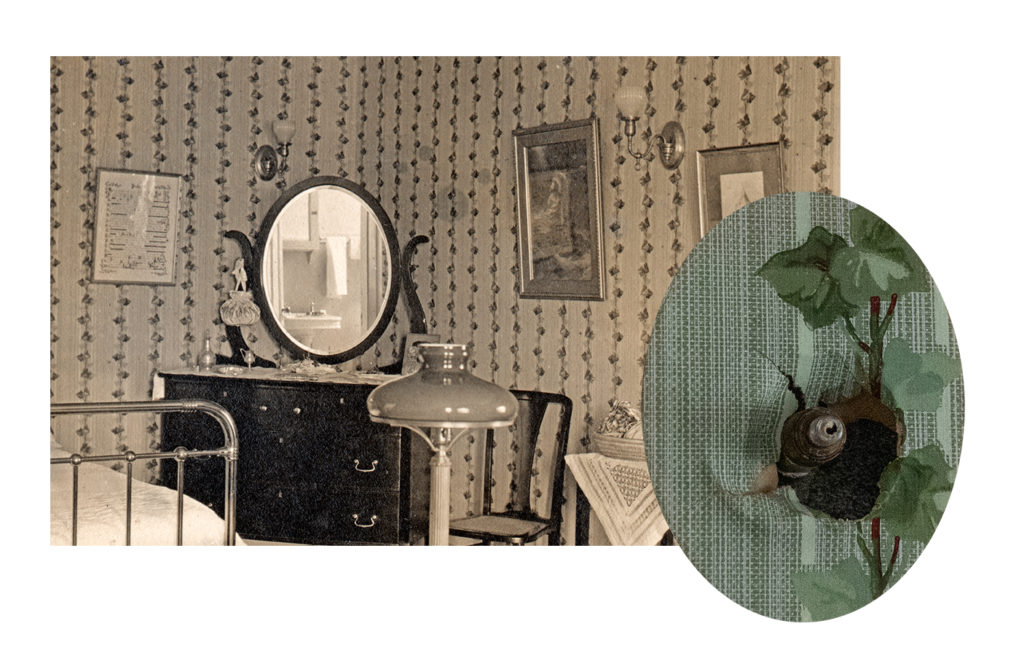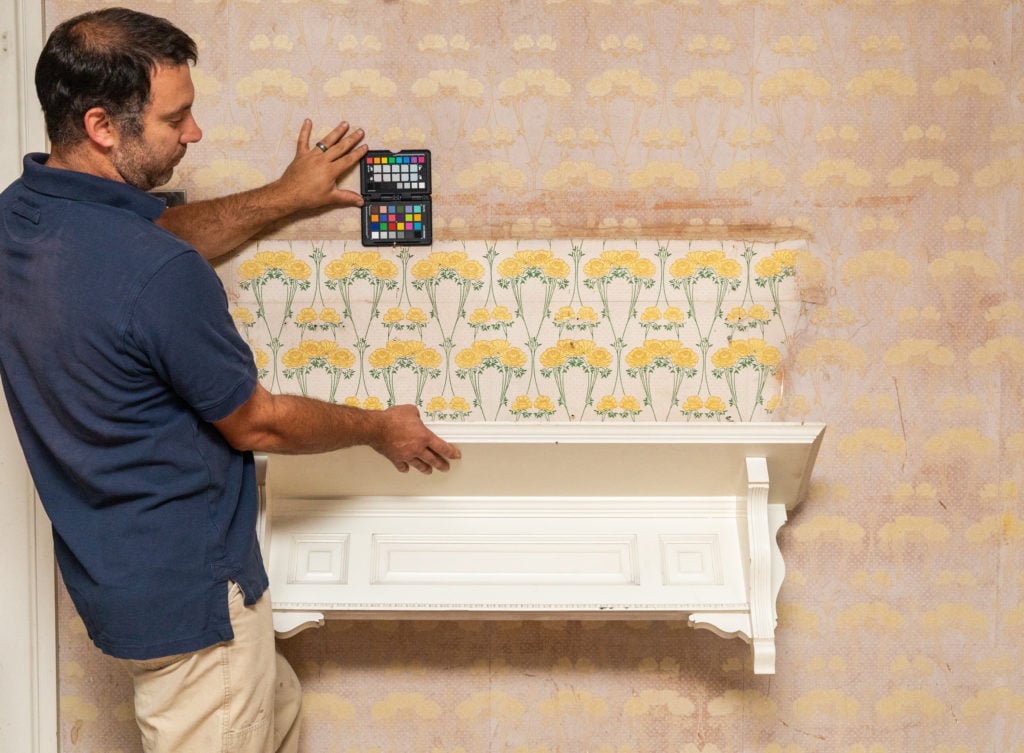
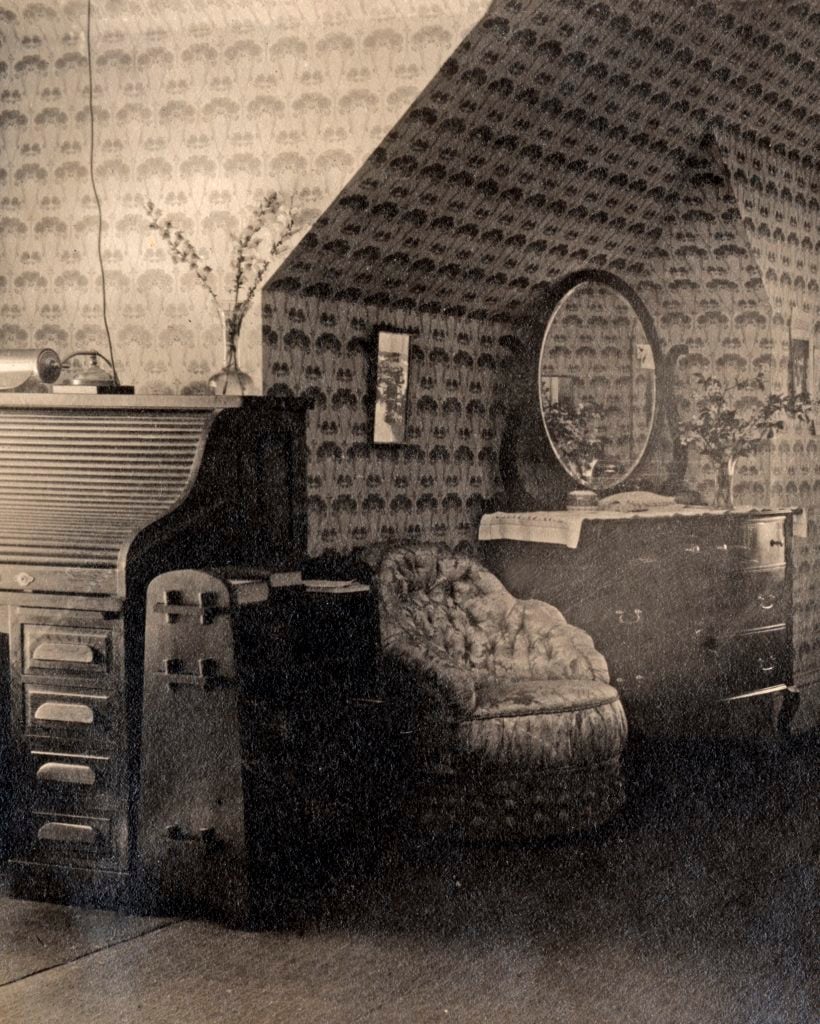
Over the past few months, as preparations for the restoration work at Mary Baker Eddy’s final home in Chestnut Hill, Massachusetts, have gotten underway, some fun surprises have come to light.
Over time, the original wallpaper in many of the rooms had naturally faded due to exposure to light. Other rooms had been redecorated in the intervening years since Mrs. Eddy and her staff lived here (1908-1910), the original wallpaper stripped. Although black-and-white historical photographs provide much information as to the home’s original appearance, the exact color schemes of the wallpaper – which is different in nearly every room – has remained largely a mystery.
Recently, however, during the exploratory phase of the restoration, original scraps of wallpaper have been found beneath doorframes, mantlepieces, light fixtures, and wall-mounted telephones and intercoms.
These recent findings have given us the key to picturing the rooms in full color.
As part of the restoration process, a team skilled in historic wallpaper replication will use these newly-discovered samples to create reproduction wallpaper virtually indistinguishable from the original.
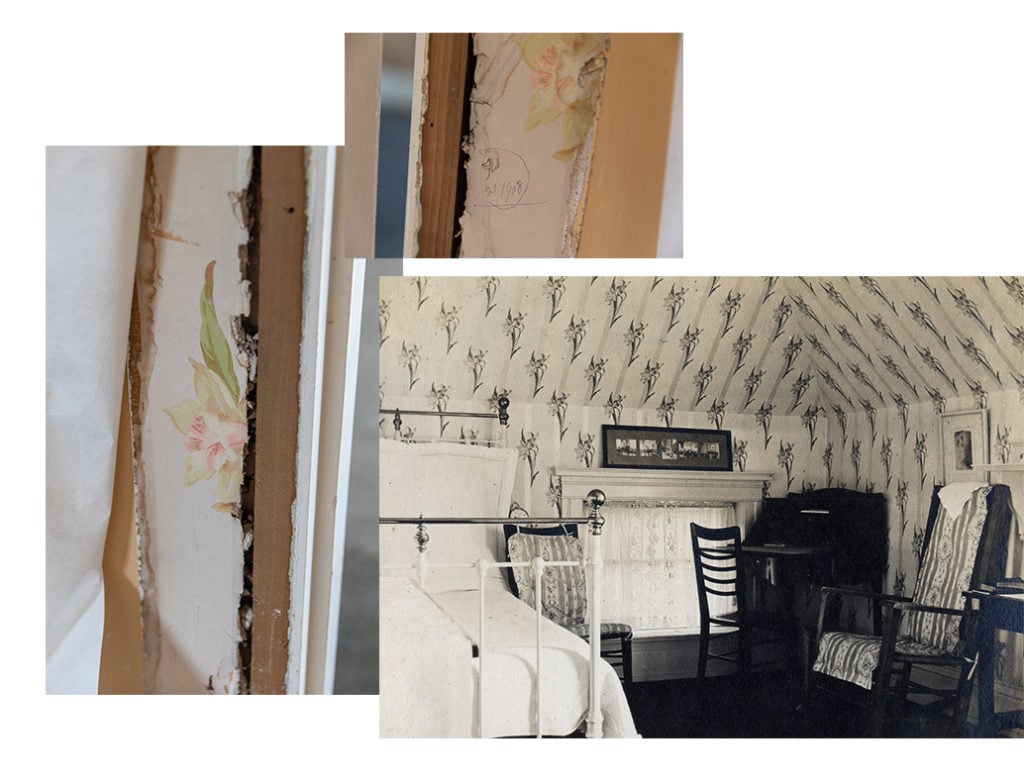
Meanwhile, an additional discovery was made. Nearly every door in the house was originally furnished with a doorstop. And in a wonderful example of New England practicality and thrift, the doorstops were homemade, using bricks covered in carpet that matched the corresponding room.
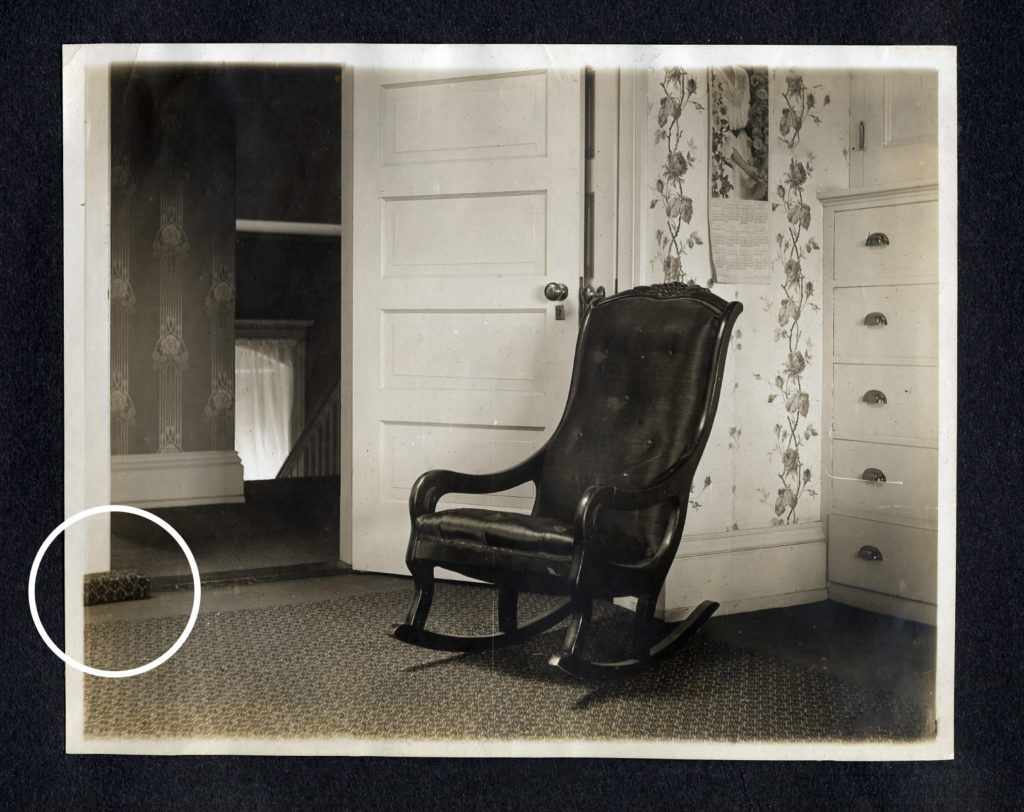
As our team searched for clues as to the original patterns and colors of the carpet which, like the wallpaper throughout the house, had either faded over the decades or been removed altogether, attention eventually turned to the doorstops.
During part of the exploratory work, the decision was made to open up one of these bricks (there are nearly 50 of them) to see if there was anything on the underside. Lo and behold, beneath the wrapping we discovered that scraps of carpet had been used for padding! There were unfaded, unworn pieces of original carpeting just waiting for us, their colors as bright and fresh as the day they were manufactured. What was also interesting was that the padding didn’t always correspond to the carpet on the outside of the bricks, so new patterns were revealed, adding to our knowledge of the house.
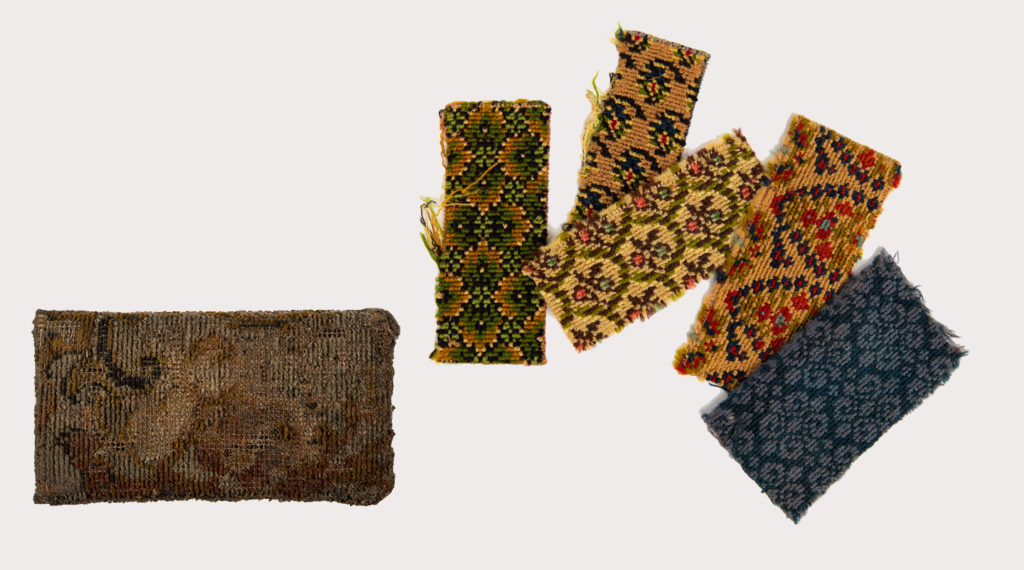
Surprisingly, it’s not that much more expensive to have carpet replicated than to purchase it off the shelf, so reproduction carpet will be ordered for the rooms that are slated to be interpreted.
Thanks to all of these discoveries, future visitors will be able to experience the house in Chestnut Hill in all of its original beauty. Even more importantly, they’ll be able to glimpse a little of Mary Baker Eddy’s sincere love for her household staff. “One size fits all” wasn’t good enough at 400 Beacon Street. Throughout the house, no two wallpaper patterns are the same; no two carpet patterns are the same. Mrs. Eddy wasn’t outfitting servants’ quarters, she was decorating rooms for a family of cherished individuals. 400 Beacon Street wasn’t just a house – it was a home.
